After years of speculation, the Apple AirPods Max have finally been announced.The first over-ear headphones from Apple, they follow in the footsteps of the AirPods and the AirPods Pro, the company’s popular true wireless earbuds.
Aside from the obvious differences in form factor, the AirPods max represent Apple’s first entry into the world of premium personal audio, promising high-spec sonic technology with a high price tag to match.
Now that the AirPods Max have been announced, you may be wondering whether you should buy them over the Apple AirPods Pro, which are the brand’s top-end wireless earbuds.
While we’re yet to test the Apple AirPods Max extensively, we have spent a little time getting to know the new noise-cancelling headphones, and we’ve compared the specs of Apple’s first over-ear headphones and its best true wireless earbuds, to make it a little easier for you to make an informed buying decision.
- Read our hands-on Apple AirPods Max review
- Read our Apple AirPods Pro review
Apple AirPods Max vs AirPods Pro: price and availability
The Apple AirPods Max cost $549 / £549 / AU$899, which is far more expensive than many of the best over-ear headphones on the market, including our current favorite cans, the Sony WH-1000XM4.
While they’re available to preorder now, they won’t actually be released until December 15 – and if you want to buy directly from the Apple Store, you may find a long wait for stock to materialize after the initial rush of orders. The AirPods Max are available to buy from other retailers though, including Best Buy in the US and Currys in the UK.
The Apple AirPods Pro are much cheaper, coming in $249 / £249 / AU$399; and now that they’re a little older, you can sometimes find discounts, especially around big sales events like Black Friday and Amazon Prime Day.
Still, the AirPods Pro are pretty pricey for true wireless earbuds, and our favorite buds, the Sony WF-1000XM3, are often on sale for about £100 / $100 / AU$100 less than the Apple in-ear headphones.
Apple AirPods Max vs AirPods Pro: design
The biggest difference between the AirPods Max and the AirPods Pro is the form factor; the AirPods Max are over-ear headphones, while the AirPods Pro are true wireless earbuds that sit against your ear canal.
Consisting of large earcups that sit – you’ve guessed it – over your ears, over-ear headphones like the AirPods Max are connected by a headband, which is usually padded and adjustable for comfort.
Meanwhile, in-ear headphones like the AirPods Pro sit just inside the ear using silicone tips that mold to your ear shape. These true wireless earbuds have no cord whatsoever; no wires to get caught in your zipper, and nothing to keep the two buds connected.
First, let’s take a look at the design of the AirPods Max, which has divided the internet in the days since their unveiling.
Coming in space gray, silver, sky blue, green, and pink, the AirPods Max feature sleek stainless steel earcups and a knit mesh headband, which Apple says is "designed to distribute weight and reduce on-head pressure". The headband frame itself is made from stainless steel, with "telescoping headband arms" that can be extended so you can find a good fit.
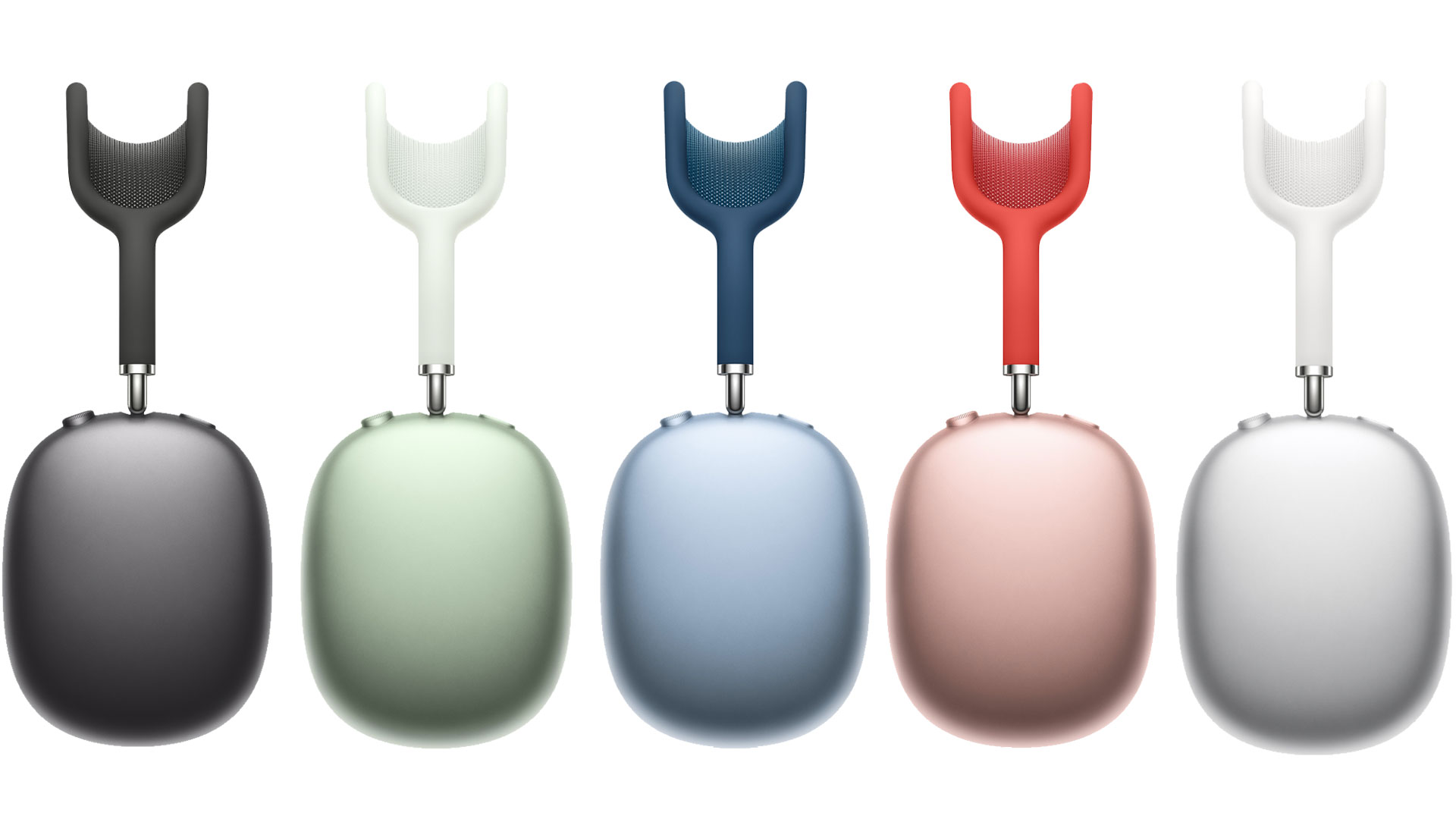
Included with the AirPods Max is an unusual-looking Smart Case that, according to Apple, puts the headphones in an "ultralow power state that helps to preserve battery charge when not in use". The Smart Case has so far been compared to a bra, a sleeping mask and a handbag by bemused Twitter users.
The original Apple Airpods were also lauded when they first launched way back in 2016 – and now they’re among the most popular earbuds on the planet, with the AirPods Pro evolving that iconic design.
These lightweight true wireless earbuds feature protruding stems that extend outside of the ear and silicone eartips that should mold to ear for a snug and secure fit – highly important with cordless earphones. The AirPods Pro also boast an IPX4 water-resistance rating, which means you can use them for working out without worrying about sweat or rain damaging the tech inside the buds.
There’s no water resistance with the AirPods Max, though over-ear headphones aren't the best form factor for use while working out anyway. Still, it’s something to consider if you’re planning on using your headphones in all elements.
The AirPods Pro come with a sleek wireless charging case that’s small enough to fit in your pocket – worlds away from the rambunctious design of the AirPods Max case.
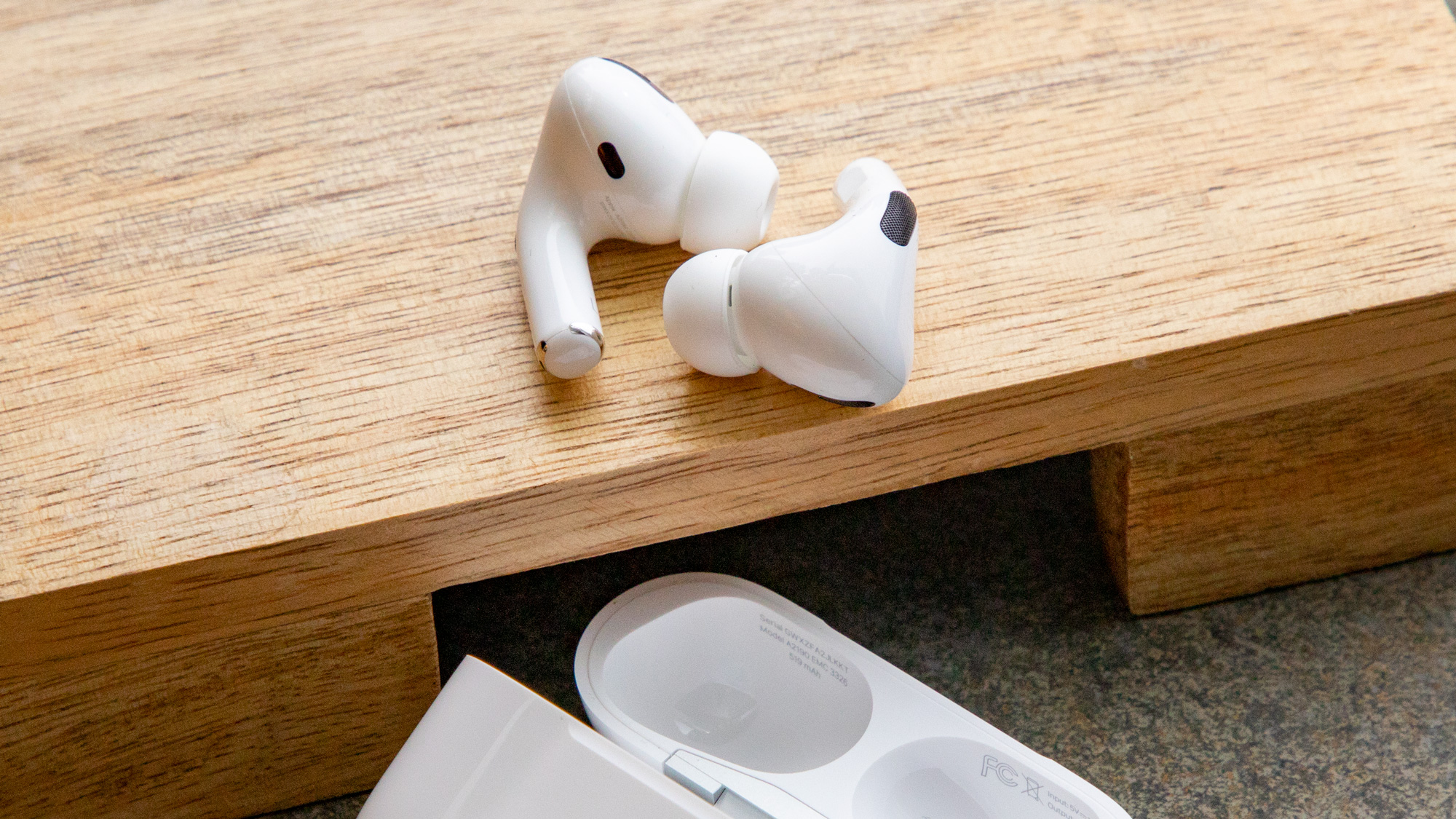
Apple AirPods Max vs AirPods Pro: controls
Surprisingly, the Apple AirPods Max feature physical controls to adjust your music playback and noise cancellation settings, eschewing the popular swipe controls that many wireless headphones come with today.
These controls are minimal; interestingly, Apple has reprised the Digital Crown dial of the Apple Watch, which provides "precise volume control and the ability to play or pause audio, skip tracks, answer or end phone calls, and activate Siri".
You can simply turn the dial to adjust the volume, or press once to play / pause your music, press once to answer and end phone calls, press twice to skip to the next track, and press three times to skip backwards.
There's also a noise control button that allows you to switch between active noise cancellation and Transparency mode. We like this old-school approach, and appreciate the nod to the Apple Watch with the Digital Crown – it’s a unique design feature that adds a sense of tactility to music listening sessions, which can be lost when using modern touch controls.
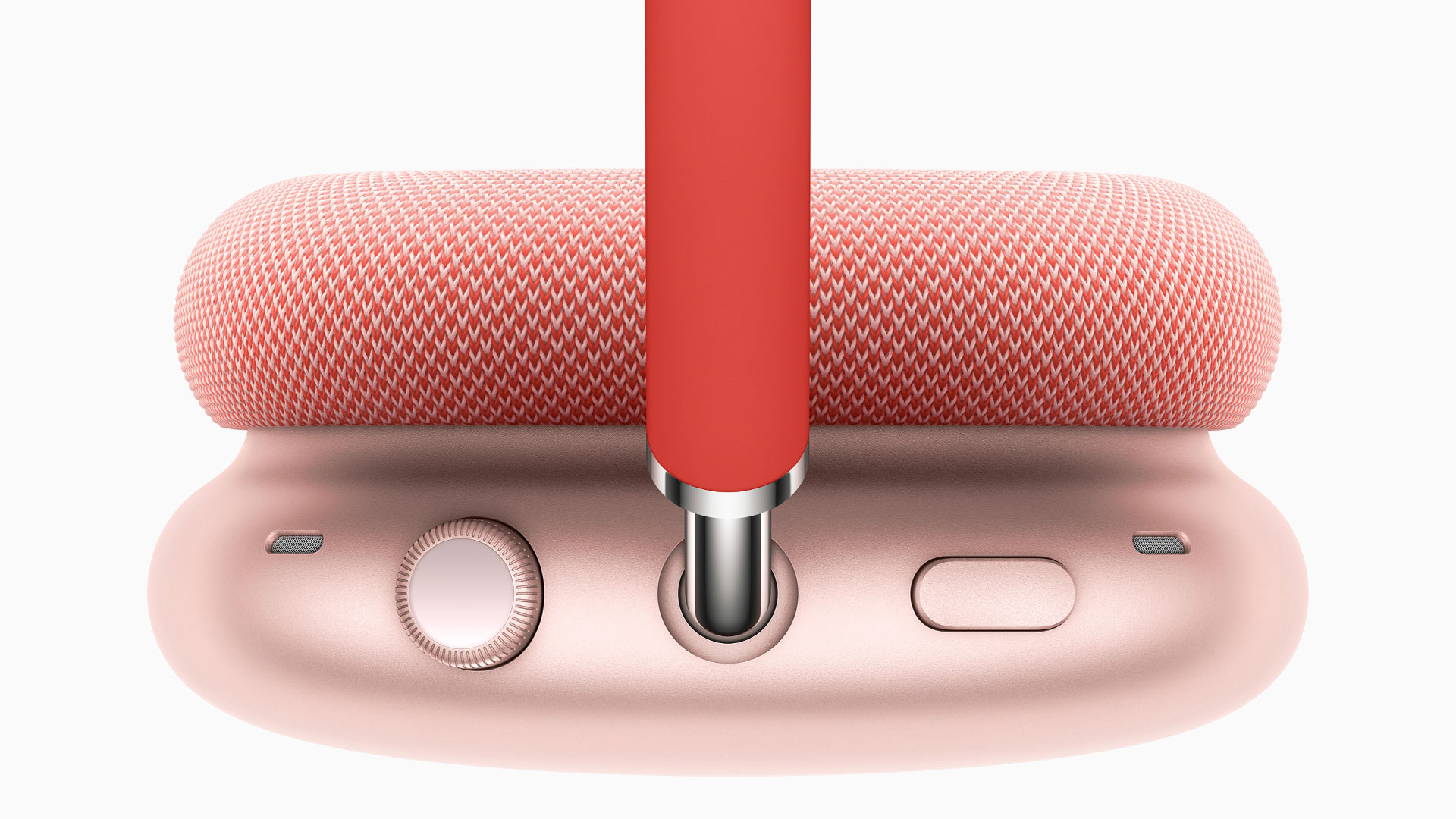
The Apple AirPods Pro sit at the other end of the spectrum, featuring touch-capacitive sensors in the stems comprising a small ridge that can be squeezed to activate noise-cancelling / Transparency mode, or skip and pause tracks. You can assign these actions different functions if you prefer.
While it makes sense for small earbuds to come with touch-sensitive controls (there’s no fitting a Digital Crown on the AirPods Pro) we’d have loved to see touch-sensitive volume control including on the ear stems, as it’s annoying to have to reach down for your phone every time you want to change the sound level.
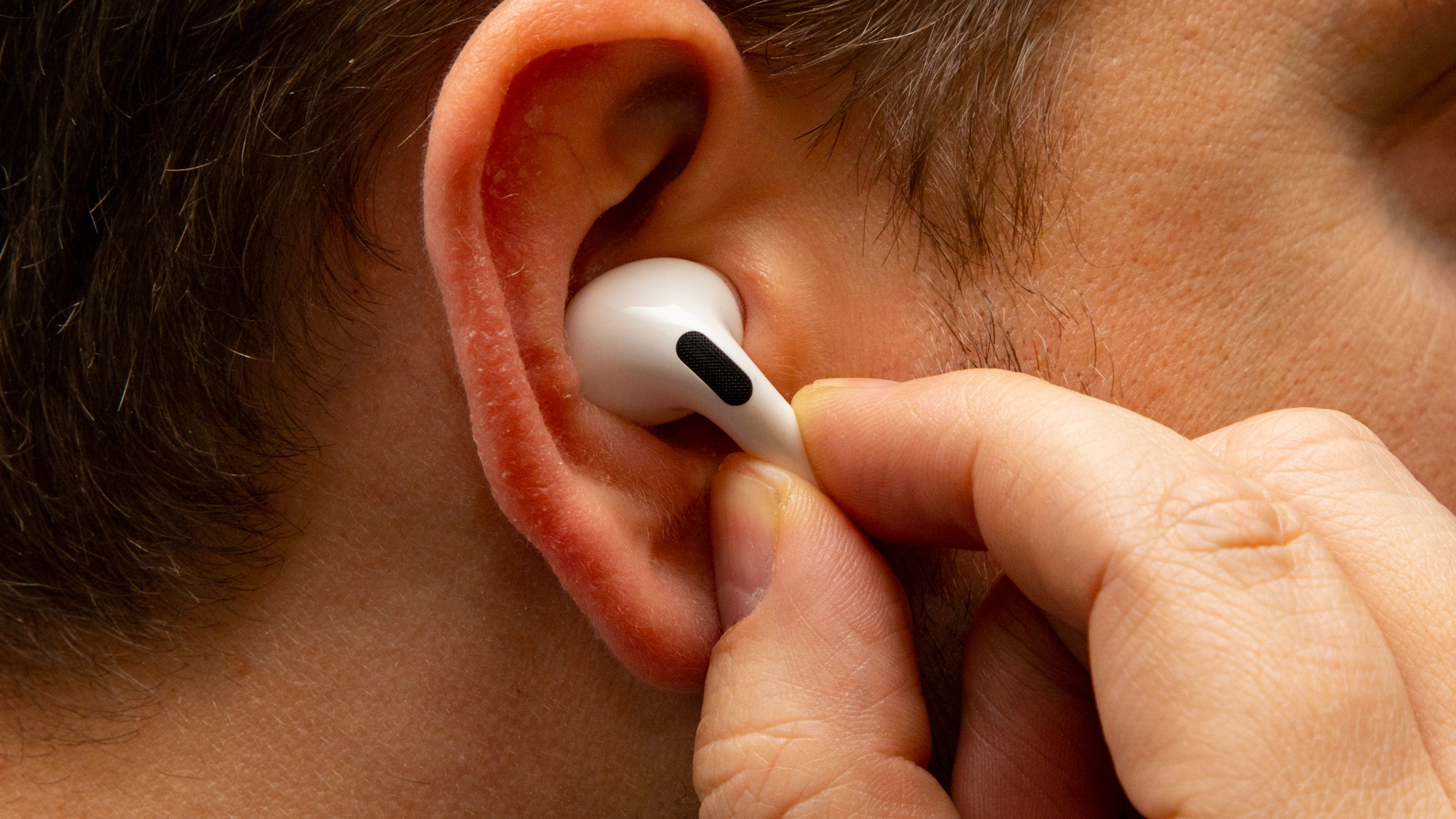
Apple AirPods Max vs AirPods Pro: audio performance
While we'll need to spend a little more time with the Apple AirPods Max to make a true assessment of the audio quality on offer, we're impressed by what we've heard so far.
The soundstage is wide, with warm, rich bass and detailed trebles that can compete with the best-sounding headphones in 2020.
They certainly offer a more powerful and accurate sound than the AirPods Pro, liekly due to the difference in size of the drivers; the AirPods Max come with 40mm dynamic drivers, which Apple says will deliver "rich, deep bass, accurate mid-ranges, and crisp, clean high-frequency extension so every note can be heard".
The drivers inside the AirPods Pro are far smaller, though Apple hasn’t revealed exactly what size they are; most true wireless earbud drivers sit between 6mm and 12mm.

That’s not to say that the AirPods Pro don’t sound good; in our tests, we found that they offer a warm, well-balanced sound that’s optimized for pop and RnB, though they lack the rhythmic accuracy and detail required to make classical music really sing.
This might not be an issue with the AirPods Max; according to Apple, a dual neodymium ring magnet motor allows the AirPods Max to "maintain total harmonic distortion of less than 1% across the entire audible range", so these headphones should sound very clear indeed, even at high volumes. That's what we've found in our initial tests, at least.
Like the AirPods Pro, the AirPods Max come with Spatial Audio. Released as part of iOS 14, the Spatial Audio feature first came to the AirPods Pro, and works in 5.1, 7.1 and Dolby Atmos, which positions sound all around you within a virtual sphere – that means that if you're watching a Dolby Atmos film that shows a plane flying overhead, it will sound as though the plane is really passing above you.
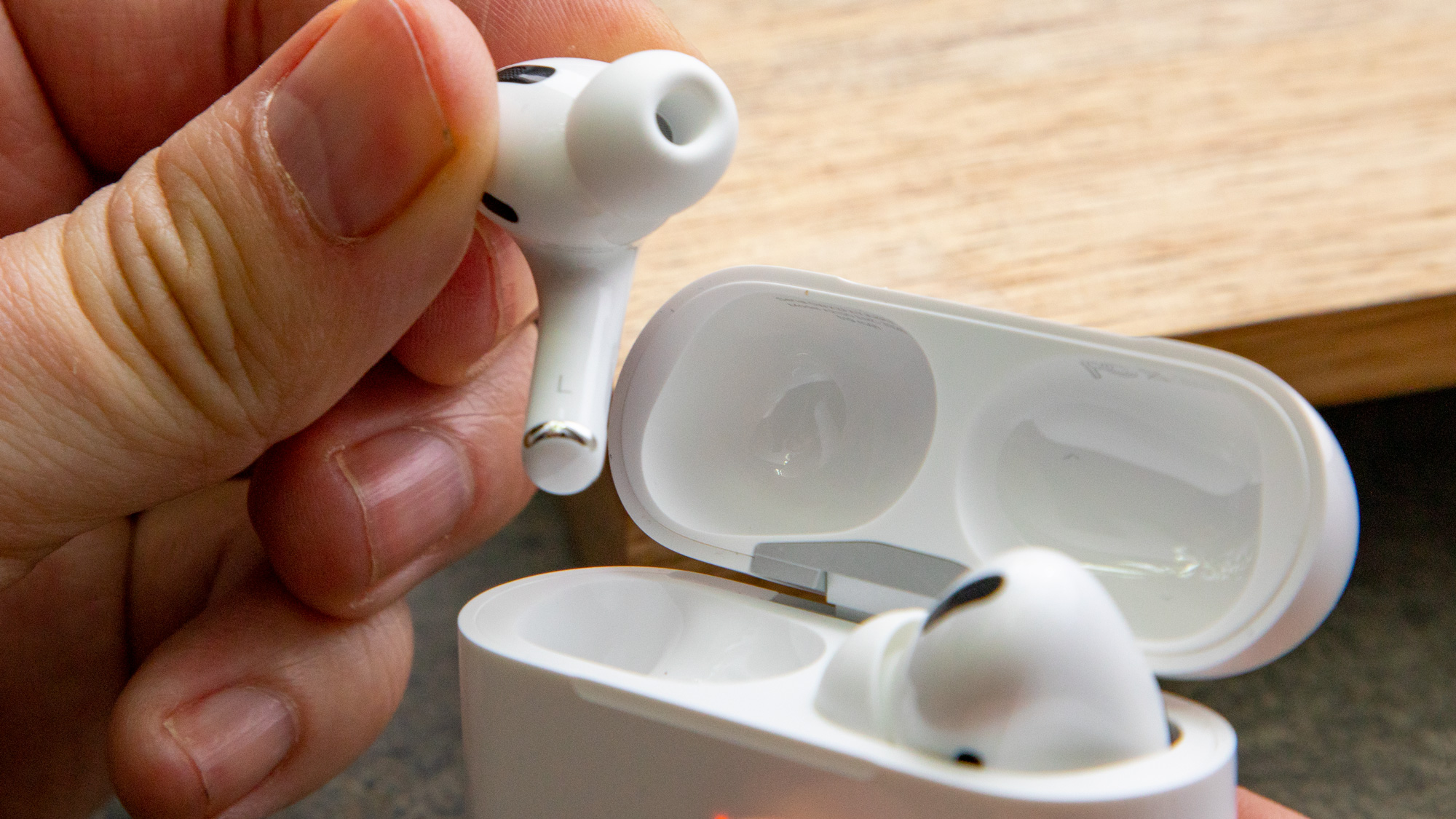
Apple AirPods Max vs AirPods Pro: battery life and connectivity
Battery life for the AirPods Max comes in at 20 hours of music playback or talk time with active noise cancellation enabled; if you turn ANC off you may be able to squeeze out a little more time, but we’ll need to test this out more thoroughly to be sure.
The AirPods Pro hold five hours of battery life in the buds themselves, with a further 20 hours provided by the case. The onboard battery life drops to four and a half hours with noise cancellation turned on, or or three and a half hours if you use the AirPods Pro as a hands-free mic for calling.
Neither the AirPods Max nor the AirPods Pro offer outstanding battery life, but they’re both long-lasting enough to compete with other wireless headphones on the market.

In terms of connectivity, both the AirPods Max and the AirPods Pro are optimized for use with Apple products, and come with the H1 headphone chip built in (or in the case of the AirPods Max, two of these chips built into each earcup).
That allows for super-fast pairing with iOS devices, hands-free Siri support, and extra features like Spatial Audio, noise cancellation, and Transparency mode.
Both headphones also support an Automatic Switching feature, which lets you easily switch between iPhone, iPad, and Mac when jumping between music listening and taking calls.
You can also share audio between two sets of AirPods on pretty much any Apple source device, so you and a friend can listen to the same music simultaneously.
Apple says the AirPods Max require Apple devices running iOS 14.3 or later, iPadOS 14.3 or later, macOS Big Sur 11.1 or later, watchOS 7.2 or later, or tvOS 14.3 or later – while they'll work with Android or Windows devices, you won't be able to use Spatial Audio or Automatic Switching without one of the aforementioned devices.
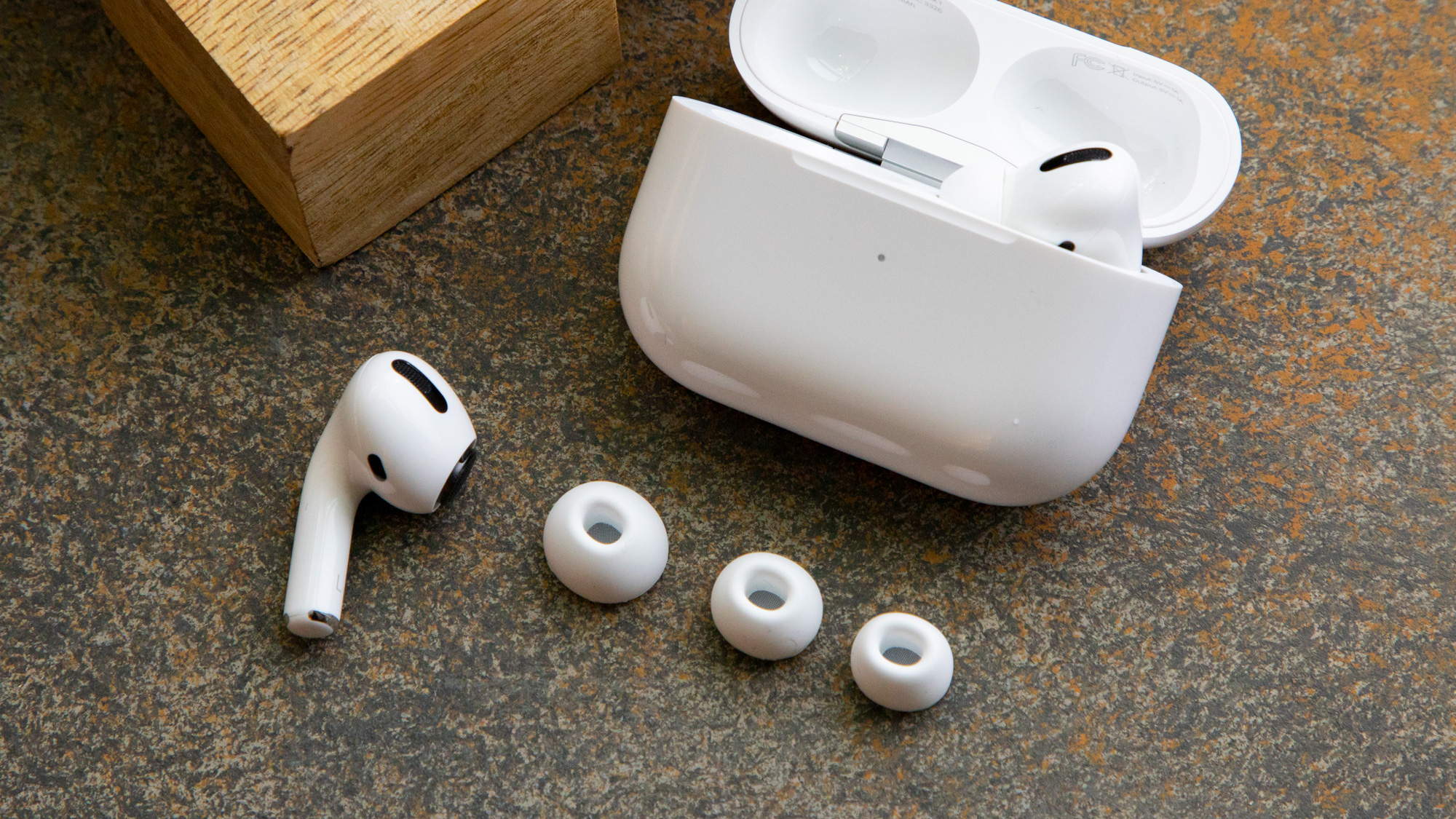
Apple AirPods Max vs AirPods Pro: active noise cancellation
Both the AirPods Max and the AirPods Pro feature active noise cancellation, which stops annoying environmental sounds from ruining your music. They also come with a Transparency mode that allows ambient sound to filter through the headphones or earbuds for times when you want to be a little more aware of your surroundings.
The noise cancellation provided by the AirPods Pro is pretty good, and while they don’t block out all environmental sound, they’ll let you listen to your music in relative peace while commuting or working in a shared space.
Based on our initial tests, the AirPods Max offer a higher standard of noise cancellation, due to the physical barrier created by the padded earcups.
According to Apple, “each ear cup features three outward-facing microphones to detect environmental noise, while one microphone inside the ear cup monitors the sound reaching the listener’s ear. Using computational audio, noise cancellation continuously adapts to the headphone fit and movement in real time".
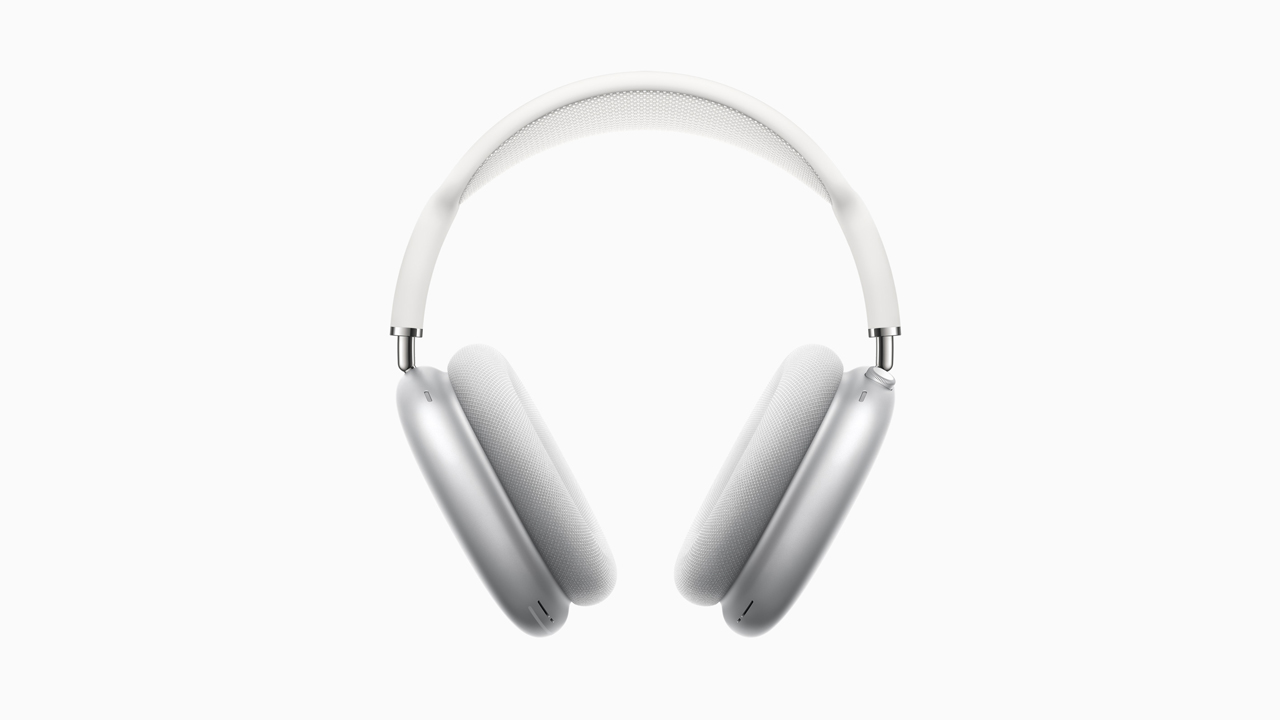
Takeaway
We can’t come to any definitive conclusions about whether you should buy the AirPods Max over the AirPods Pro without testing them more rigorously, but there are a few instances where we can recommend one model over the other if you’re sure you want a pair of Apple headphones.
If you’re on a tight budget, the AirPods Pro are the far cheaper model of the two – and even then, they’re not exactly cheap. If you do opt for the AirPods Max, bear in mind that you may need to fork out for extra accessories, like a Lightning to 3.5mm audio adapter if you want to use them with a wired connection.
You should also go for the AirPods Pro if you want something that’s easily portable; their wireless charging case is small enough to fit in your pocket, whereas the over-ear design of the AirPods Max means they’re bigger and heavier.
If audio fidelity is your main concern, the larger drivers within the AirPods Max means they offer a more powerful, detailed sound than the AirPods Pro – and noise cancellation is more effective thanks to the padded earcups.
They’re nearly evenly matched when it comes to battery life, though the AirPods Pro will last you an additional three to four hours based on how you use them, so you may want to consider the wireless earbuds if this is a big concern for you.
Remember – it’s worth asking yourself whether you should buy a pair of Apple headphones in the first place.
They’re so heavily optimized for iPhone and iPad that Android users will miss out on many of the features that make the AirPods Max and the AirPods Pro stand out from the competition.
Take these away and, at least in the case of the AirPods Max, you have a pair of noise-cancelling headphones that cost around $200 / £200 more than most of the competition, including some of the best models from brands with decades of audio heritage.
We’ll be testing the AirPods Max more extensively over the next few dats, and we’ll be updating this guide to reflect our findings; fingers crossed that they live up to all the hype they’ve garnered since their launch.
from TechRadar - All the latest technology news https://ift.tt/3mgI7Lk







No comments:
Post a Comment